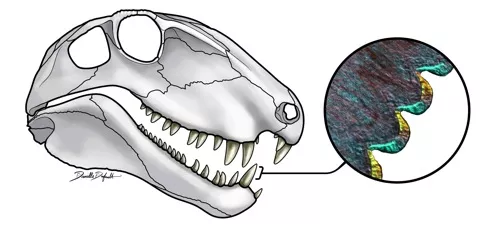
Hidden dental diversity in the oldest terrestrial apex predator Dimetrodon
A tooth is not just a tooth. Even the smallest features of teeth can provide insight into the evolution, ecology and diet of animals that lived millions of years ago. That is what PhD student Kirstin Brink (Reisz Lab) has shown in her latest paper “Hidden dental diversity in the oldest terrestrial apex predator Dimetrodon” published in Nature Communications. In this study, Kirstin used histological methods to discover that the not all species of Dimetrodon, the first terrestrial vertebrate apex predator (298-272Ma), has ziphodont (serrated) teeth. The oldest, smallest species have teeth with smooth edges or with edges that have small enamel features, and the geologically younger, larger species have true ziphodont dentition. This suggests that different species were processing their prey in different ways, perhaps because their prey items were changing through time, or perhaps as evidence of niche partitioning between co-occurring carnivores.
Congratulations on this exciting discovery, Kirstin!
